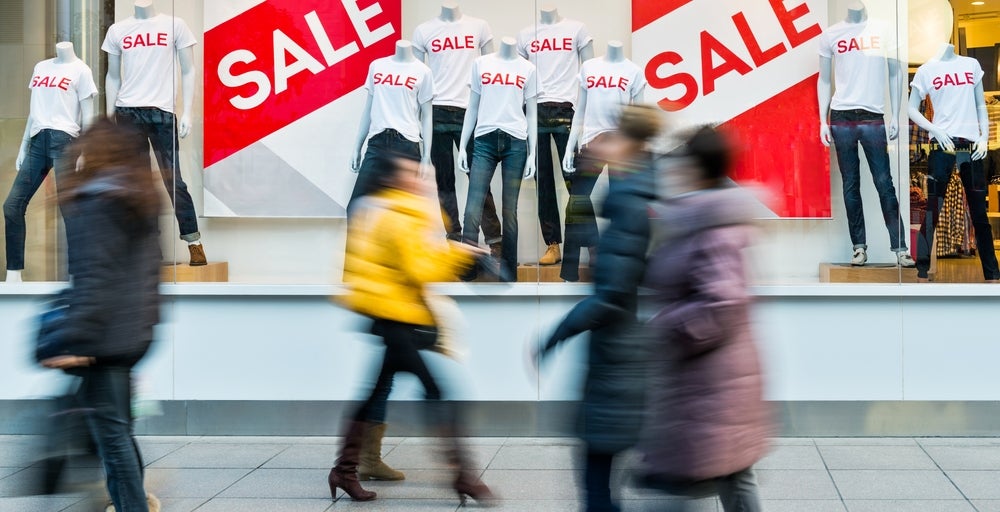Back-to-school is the second biggest shopping season after the winter holidays. According to the National Retail Federation (NRF), total back-to-school shopping spending has surged 55% over the past 10 years, and is expected to reach $75.8 billion this year alone.
 As this year’s back-to-school shopping activity dies down, smart retailers are already analyzing 2016 results and making adjustments to marketing strategies to ensure future campaigns are optimized for success.
As this year’s back-to-school shopping activity dies down, smart retailers are already analyzing 2016 results and making adjustments to marketing strategies to ensure future campaigns are optimized for success.
For example, while discount stores still generate the most back-to-school revenue, online shopping has increased 30% year-over-year and can’t be ignored. What can brick-and-mortar retailers do to ensure the trend in online shopping doesn’t cannibalize their business in future shopping seasons?
The answer: Do more with mobile.
Unlike PCs, laptops and even tablet computers, smartphones are not only pervasive, they are truly personal. They’ve changed the way we communicate, work, play, bank, and yes, shop. To help retailers engage with a new generation of “mobile-first” consumers in future back-to-school shopping seasons, and beyond, here are four tips to consider:
1. Observe and learn
The more you know about your customer, the better your chances to keep the mobile engagement door open. Retailers can gain a wealth of insight into consumer habits and preferences by adding deeper analytics to their mobile apps. Smartphones have the ability to detect a wide range of information (opt-in, of course) on customer behavior, such as indoor and outdoor locations visited, dwell-time at a specific location, frequency of visits, applications in-use, movement patterns, and much more.
These previously unobtainable insights can help retailers answer questions such as:
• How soon after viewing online promotions do customers come to my stores?
• What times of day or days of week are customers in the vicinity of my stores?
• How long do customers stay when visiting my stores?
• How often does my customer visit a competitor’s location?
Being able to answer these key questions can help inform future marketing strategies, enable more personalized engagement and ultimately drive sales.
2. Right place, right time engagement
Fifty percent of mobile users cite mobile push notifications as ‘annoying’, yet 35% of push messages are still blasted indiscriminately to customers. On the other hand, precise targeting based on real-world context and historical data can be highly valuable to the consumer.
For example, a customer researching printers on their laptop at home saves a particular printer in their virtual shopping cart for future consideration. A few days later, the customer enters a retail location where the printer (or a similar product) is in stock. The customer immediately receives a push notification providing pertinent product information such as: “Find printer X and ink cartridges in Aisle 15.” By engaging the customer upon store entry with relevant information on a product of interest, the retailer creates a seamless experience that unites online and real-world shopping actions.
By combining real-world context gained from smartphones with data from the e-commerce site, email automation system, POS system, etc., retailers can create a more cohesive shopper journey.
3. Ask for a review
While engaging with customers to drive sales is important, not all interaction has to be offer-based. It is critical to solicit feedback from customers, and if possible, create brand advocates who will share their positive experiences across social networks.
After a shopper makes a purchase either in-store or through a mobile or online channel, prompt them to post a Yelp review while the experience is still fresh. For back-to-school students out on a shopping excursion, encourage them to share photos in front of your store or with new merchandise on Facebook or Twitter using a special hashtag. Contests that utilize social tagging are a valuable way to drive brand awareness.
4. Offer an incentive to come back
We’ve all experienced the frustrations that come along with receiving a great coupon from a brand you love, only to realize it has expired by the time you remember to use it.
Help your customers avoid this frustration by combining mobile location with loyalty incentives to target customers as they come within range of your stores. Proximity-driven mobile messaging can remind customers that they have an offer that is about to expire when they’re near a store, or deliver them a new offer based on historical purchase information.
Customers for life
Personalizing the shopping experience is critical for brick-and-mortar stores looking to remain relevant in an increasingly competitive, highly digitized market. Integrating mobile into existing marketing initiatives can give retailers a significant edge over the competition.
Mobile engagement done right can reinforce and extend customer loyalty far beyond what any technology has done before. Approaching mobile as a relationship, instead of a channel, won’t just benefit a brand’s back-to-school sales, it will grow the lifetime value of each customer.
Carla Fitzgerald is CMO at Smith Micro.



